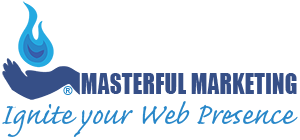
When you start an online search, you usually have some specific reason to do so. Your goal may be to find educational information for something you are working on. Or you are researching and comparing products to ultimately make a purchase. You could also just want a quick answer to a question or directions to a store or restaurant. In all cases, your search has a particular intent.
But when you enter your search query and you get back the results, do they help you? Are the answers aligned with the meaning behind your search? Or are the results giving you answers to something other than what you are looking for?
As a content creator, it is important that we understand our audience needs, why they are searching and then create and optimize our content to satisfy their query.
What is search intent?
Search intent is the underlying purpose or motivation behind an online search query. It goes beyond the words entered into a search engine and focuses on understanding what the user hopes to achieve with their search. If we want our content to rank for a particular keyword phrase, we need to understand the intent of the search and provide the best answer to their query.
Google defines four types of search intent that align with the user’s reason for conducting the search.
Informational – I want to know
Informational search is when you search to find information. You are in research mode and want to learn about a particular topic, complete a task or try something new. At this point in the buyer’s journey, you are not ready to make a purchase. The keyword intent behind informational search queries is to get more knowledge about a subject.
Navigational – I want to go
Navigational search is where you are looking for a local business, and online business or want to visit a nearby store. The keyword intent behind navigational search queries is to get location information. You have already made the decision about what you want and just need to know where to find it.
Commercial Investigation- I need to decide
Commercial search intent is when you are researching a service or product before you are ready to make a transaction. You are getting close to buying, but you want more information to determine which product or service you will choose. You may be comparing products, looking for reviews, checking out pricing and terms of service or understanding which product has the features you need.
Transactional – I want to buy
Transactional search is where you are ready to make a purchase but are looking for help on where to buy. For products, you may want to buy directly from the manufacturer or you may want to find a better deal. Having this content on your website helps you convince them to purchase your products or services. What they are looking for now is the value you provide verses another business that has the same or similar offering.
How to determine user intent for a keyword
You might be wondering how you go about understanding intent. For some searches, the search query may be obvious. For example, if the search query starts with “how”, most likely the search is going to be informational – i.e. how to increase website traffic. If the search uses the phrase “near me”, the search is most likely to be navigational.
But what if the search is more generic? How do you figure out what the intent of the search is?
Let’s look at an example.
I did a search for the keyword “golf clubs” to see what comes up. The results assumed I was interested in buying new golf clubs. My search results contained brands and businesses that sold them, both online and offline, that I could visit to purchase. However I also noticed some “People also ask” questions:

And a little further down in the results, I saw a buying guide.

In other words, even Google isn’t sure about my intent of the search and therefore, provided a few options.
Then I searched for “best golf clubs for beginners“. The results were much more focused being comprised of buyer’s guides and articles that discussed the topic. There were still ads to buy golf clubs, but the organic results would help me determine the best club for a beginner.

Then I searched for “golf clubs near me“. That resulted in a list of golf courses in my area. But it also provided places I could shop for golf clubs at retail stores. Again, the intent of the search was a bit unclear.

As a content creator, have a plan to provide content for each of the keywords that are relevant to what you offer based on intent. You need to understand what your audience is looking for and create the appropriate content to satisfy their questions. If you sell golf clubs, have content on different brands you offer. Also, provide educational content to help the searcher decide which set of golf clubs are best for them.
Optimize content for search intent
Now that you understand the concept of search intent, here are the steps you need to optimize new and existing content.
Review your keyword research
If you have already done keyword research, review what you have to ensure you understand the intent of each keyword that is important to you. If you have not done keyword research for your business, take the time to do it. Knowing what your audience wants and why they want it will help you create the content that attracts them to you.
Analyze the search results
As we showed in the example above, when you want to write or update existing content, start with a search of your keyword phrase. The first page of the search results will give you examples of the type of content that is associated with that query. You will know if your keyword phrase is aligned with what you think is the intent. If not, find long-tail keywords that better describe the purpose of the search and rewrite and optimize the content around that phrase.
Review your content
Start with content you already have and conduct a content audit. Update and optimize your content to reflect the value your audience is looking for. Since Google’s helpful content update, you may gain more visibility faster if you update what you have. Then work on new content that you need to fill the gaps in your content strategy.
Choose the right content type
Make sure your content aligns with the intent and contains the information that people are expecting. If someone is looking for “how to” do anything, they are usually looking for a step by step process to help them complete a task.
For each of these specific types of search intent, having the right content to satisfy the search is important.
- Informational – Types of content that work for this type of search are blog posts, how to articles, educational videos, tutorials, and podcasts. Creating an FAQ with answers to common questions about your business can help meet user informational search needs as well.
- Navigational – Types of content that work for this type of search are citations, reviews, directions or information in your Google Business Profile. It’s not necessarily content you create, but listings you need to claim and ensure they are accurate.
- Commercial – Types of content that help you in this moment are product comparisons, white papers, detailed product and service pages, case studies, eBooks, buyer’s guides, pricing information and a product or service FAQ.
- Transactional – Content such as a complimentary assessment, testimonials, estimates, pricing, discounts, demos or free trials can encourage the user to lean more towards your offering.
Conclusion
Understanding the motives behind search queries, whether driven by wanting to know something, wanting to do something or wanting to buy something, encourages us to tailor our content to our target audience’s needs. This will help us offer more value to our audience while also improving the chances of ranking higher in the search results.






